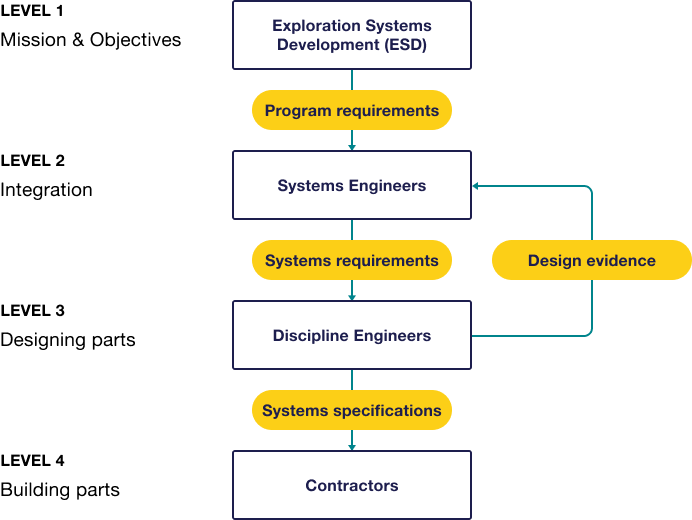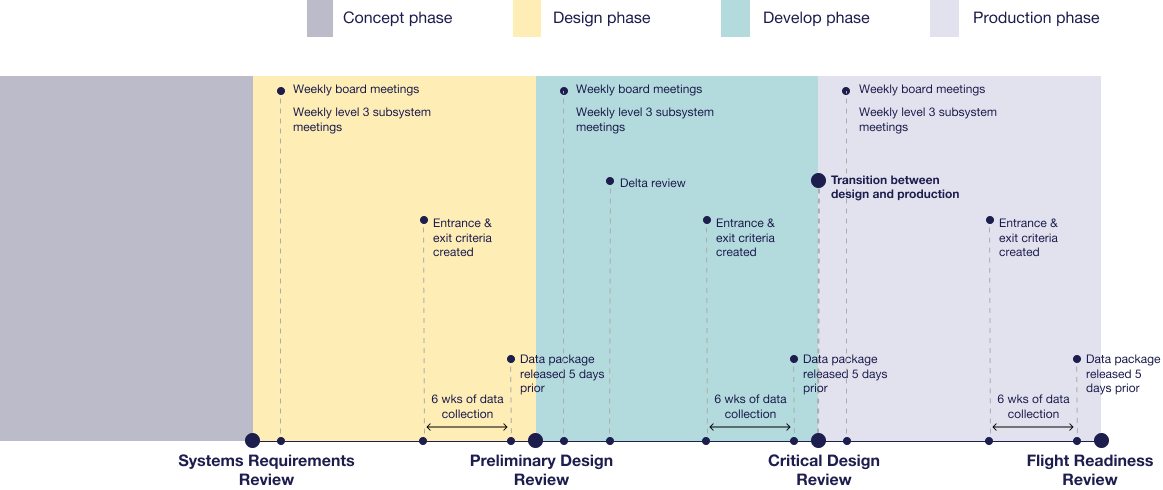Space Launch System
NASA's Space Launch System, or SLS, is an advanced launch vehicle that provides the foundation for human exploration beyond Earth’s orbit. SLS is the only rocket that can send Orion, astronauts and large cargo to the Moon on a single mission.
SLS is powerful enough to send the Orion spacecraft beyond the Moon. For Exploration Mission-1, Orion will travel 280,000 miles from Earth—farther in deep space than any spacecraft built for humans has ever ventured.
NASA's Organization Levels
Requirements
In NASA’s Systems Engineering Handbook, a requirement is defined as “the agreed-upon need, desire, want, capability, capacity, or demand for personnel, equipment, facilities, or other resources or services by specified quantities for specific periods of time or at a specified time expressed as a ‘shall’ statement.”
There are two types of requirements: functional and performance. A functional requirement defines what an element or subelement should do. A performance requirement defines how the element or subelement should operate and gives parameters for verification activities.
Verification
Before any requirement can be officially met and designated ‘launch ready,’ it must be verified through design evidence. Design evidence can take many forms, from Data Verification Objects (DVOs) set by the program to Design Math Models (DMMs) created by discipline teams. The tests run and data collected by an engineering team to show that a requirement has been fulfilled are direct representations of a team’s usage context.
Usage Context
Usage context describes the way an engineering team interprets and applies a performance requirement. A complete usage context should include the discipline team’s interpretation of the performance requirement (under what conditions are these operating standards to be met?), the verification documents and activities that are being created and updated as design evidence, and the rationale behind why the discipline team believes their interpretation is correct.
Milestone Reviews
It will take years to design and develop the SLS. To ensure the SLS is successfully moving forward and adhering to schedule, NASA engineers perform periodic milestone reviews. Milestone reviews are checkpoints in the rocket design process where representatives from each discipline team come together and share completed work and progress. The development of SLS is broken into several phases (shown below). Program milestone reviews occur at each transition point, and team milestone reviews occur throughout the phases. During reviews, designs are compared against NASA maturity standards.

